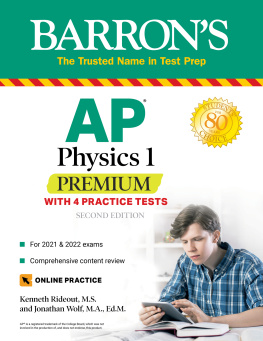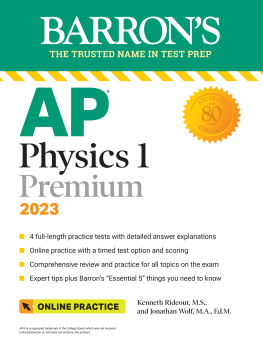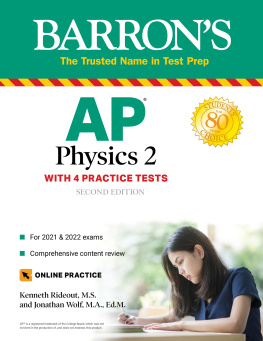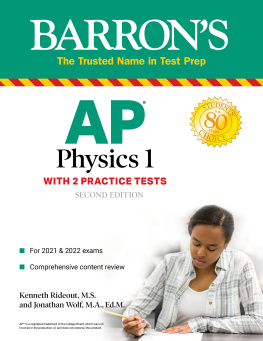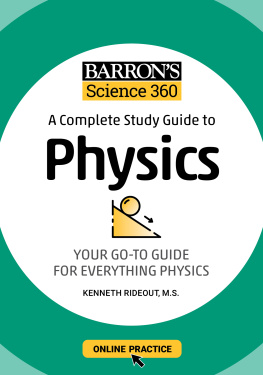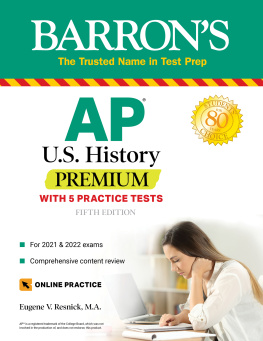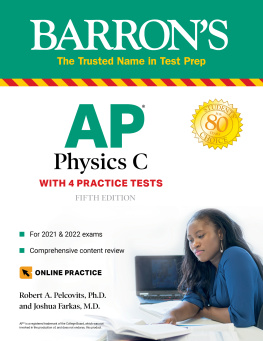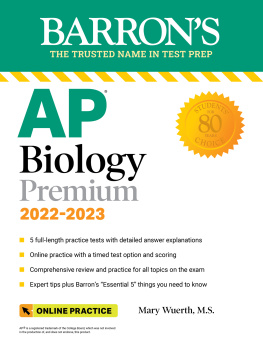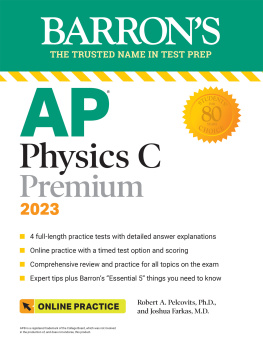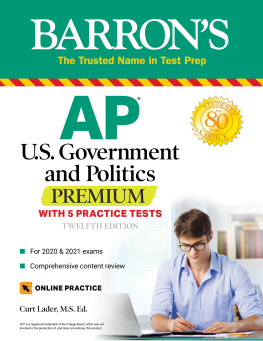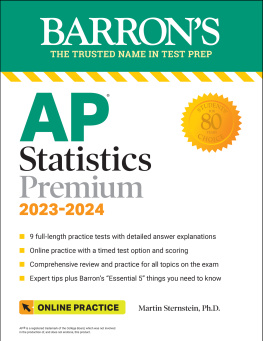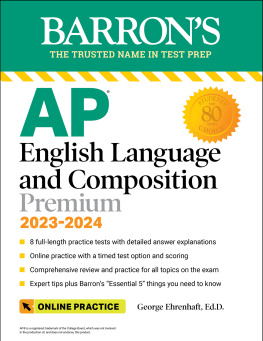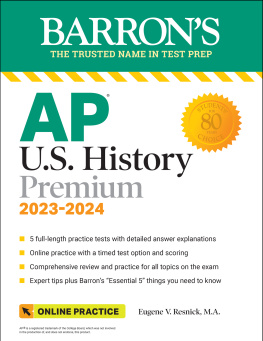Contents
Guide
Page List

About the Authors:
Ken Rideout has a B.S. in Honors Physics from Purdue University and an M.S. in Physics from Carnegie Mellon University. He has been teaching high school physics for more than fifteen years in the Boston area and is currently the science department head at Wayland High School in Wayland, MA.
Jonathan Wolf has been teaching physics at both the secondary school and college levels for more than thirty-five years, and has also been an adjunct assistant professor of astronomy at Hofstra University. He has published over forty professional papers in the fields of astronomy, physics, and physics education and served for more than ten years as assistant editor for The Science Teachers Bulletin published by the Science Teachers Association of New York State (STANYS). In addition to being the author of Barrons AP Physics B, he is also the author of Barrons College Review: Physics and previously was co-author of Barrons SAT Subject Test in Physics. Jonathan Wolf is currently an adjunct professor of physics at Fairleigh Dickinson University.
Copyright 2020, 2018 by Kaplan, Inc., d/b/a Barrons Educational Series
All rights reserved.
All rights reserved under International and Pan-American Copyright Conventions. By payment of the required fees, you have been granted the non-exclusive, non-transferable right to access and read the text of this eBook on screen. No part of this text may be reproduced, transmitted, downloaded, decompiled, reverse engineered, or stored in or introduced into any information storage and retrieval system, in any form or by any means, whether electronic or mechanical, now known or hereinafter invented, without the express written permission of the publisher.
Published by Kaplan, Inc., d/b/a Barrons Educational Series
750 Third Avenue
New York, NY 10017
www.barronseduc.com
ISBN: 978-1-5062-7435-5
10 9 8 7 6 5 4 3 2 1
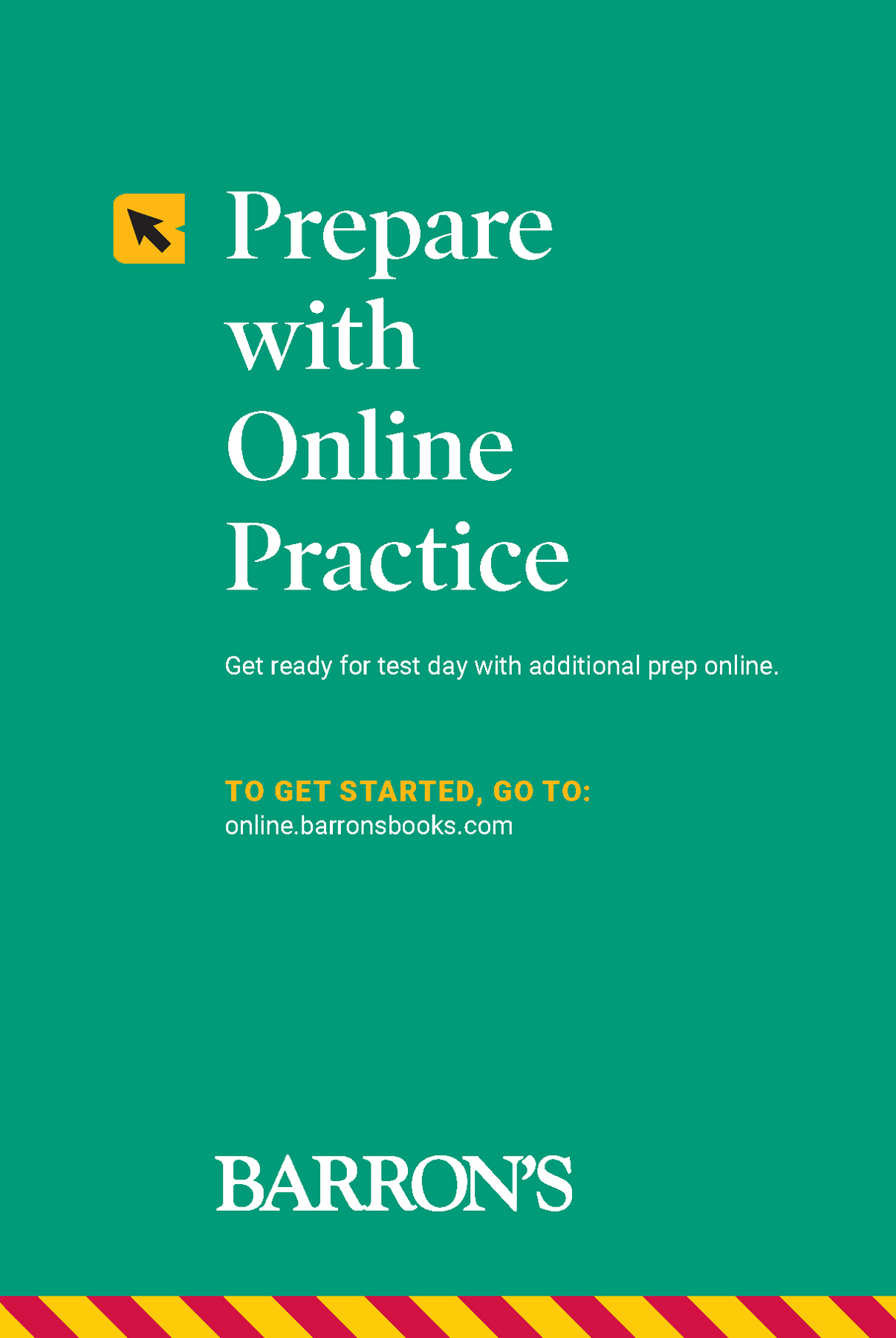
Contents
As you review the content in this book to work toward earning that on your AP Physics 1 exam, here are five things that you MUST know above everything else. |
Barrons Essential (AP Physics 1)
|
| Know your kinematics: Know the difference between velocity and speed, displacement and distance. Know to use equations of motion only for problems involving constant acceleration and to otherwise use graphical methods to analyze the kinematics. Find hidden information within the problem (initial or final speeds of zero, accelerations of 9.8 m/s2). Keep your x- and y-motions separate: the only connecting variable is time. |
| Know your dynamics: Start all analyses with a free-body diagram. Align your coordinate system with the direction of acceleration (if known). Be alert for situations that require a net force but no corresponding change in speed (centripetal forces). Do not add additional forces in an ad hoc manner. Decide on the number of forces based on the objects interactions, not its motion. |
| Know your conservation laws: If all the masses and motions of interacting particles are specified, conserve the net values of energy, momentum, and angular momentum. If the object in question is interacting with an object whose masses and motions are unspecified, then use the interactions to calculate changes in conserved quantities. When using conservation of energy, be alert to work done by nonconservative forces. When using conservation of momenta, remember that both linear and angular momenta are vector quantities. |
| Look for crosscutting questions: This exam is designed to probe for your understanding of the connections between the various topics covered in a first year physics class. It is not enough to be able to solve the classic problem types. You must be able to solve multitiered problems (e.g., apply conservation of angular momentum and dynamics at the same time within one problem) and apply your knowledge to new situations. |
| Understand the underlying concepts: Be sure to understand how to explain the whys, not just to calculate a numerical solution. Novel situations or new types of problems can be solved by students who understand the concepts behind the equations. |
In this review book, you will find all the material you need to review and prepare for the AP Physics 1 exam, a first-year precalculus course. This book is a newly updated, targeted, and enriched version of Barrons AP Physics 1.
Each chapter has review questions that vary in style and level of difficulty. These are intended to test your level of understanding of the review material. Some of these chapter questions may be easier, harder, or in a slightly different style from the actual AP exam as they are limited to the content of that particular chapter. Likewise, each chapter has a mix of traditional problem-solving examples as well as the more text-based and conceptual type of questions that appear on the AP Physics 1 exam. The tests, on the other hand, are broad in scope and draw from several different content areas at once. Included in this book, as well as online, are several full-length practice tests that mirror the actual AP exams in style, content, and difficulty. All questions have full solutions and explanations provided. Before the review chapters is a diagnostic test that can be used for practice or to guide you specifically to certain content areas you may need to review before the AP exam. Additional problem-solving strategies are provided throughout the book.
As the College Board has better defined the scope of the relatively new AP Physics 1 exam, we are better able to target this book for students who are preparing for that exam. This material, originally from a previous book written by Jonathan Wolf, has been updated and has benefited from several expert reviewers and editors at Barrons. I would like to thank my many students through the years who have made my job as a physics teacher a real joy. Also, I especially want to thank my wife, Irene, for her support throughout this project.
Ken Rideout
Wayland, Massachusetts
December 2019
KEY CONCEPTS
STRUCTURE AND SCOPE OF THE AP PHYSICS EXAMS
The College Board currently offers four AP Physics exams. This book is for students preparing for the AP Physics 1 exam, which corresponds to a first-year algebra-based college course. The other exams are AP Physics 2 (a second-year algebra-based college course), AP Physics C Mechanics (calculus based), and AP Physics C Electricity and Magnetism (also calculus based). Note that the old AP Physics B exam is a retired test and is no longer offered by the College Board. Both the AP Physics 1 and AP Physics 2 exams focus on conceptual underpinnings and basic scientific reasoning along with the traditional problem-solving aspects of physics. In addition, both exams have questions that require experiential lab understanding. Although there are some calculation-oriented questions, these two tests are explicitly designed not to be plug and chug type questions. Students who do not thoroughly understand the physics concepts behind the equations will find themselves at a disadvantage.

